Timepix Data Analysis in the ATLAS Experiment at CERN

| Type: | Master, PhD |
| Supervisor: | André Sopczak |
| Abstract: | The work will be carried out analysing data being collected with Timepix (TPX) pixel detectors in the ATLAS experiment at CERN. The TPX devices are chiefly developed and maintained by the Institute of Experimental and Applied Physics (IEAP). These devices allow characterizing the composition of radiation in the ATLAS experiment. They also allow determining the primary collision rate with precision. The resulting luminosity measurements are particularly important for many precision analyses in the ATLAS experiment. The TPX detectors will be used for particle identification. Besides the data analysis the project may also be oriented towards confronting high-level simulations with the new experimental results. The application of up-to-date statistical methods will ensure the utmost achievable precision. The project will be performed in an inspiring international collaboration and offers the possibility for research travels to CERN. The project is foreseen for Masters students and can be extended to doctoral theses if qualified candidates apply. |
Higgs Boson Research with Data Collected by the ATLAS Experiment at CERN
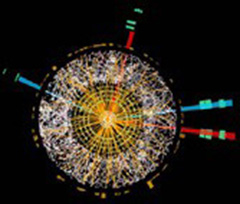
| Type: | Master, PhD |
| Supervisor: | André Sopczak |
| Abstract: | The work will be carried out analysing experimental data and phenomenological research in the ATLAS experimement at CERN. After the discovery of a Higgs boson with 125 GeV mass, at the forefront of research is the measurement of its properties. A fundamental prediction of the Higgs mechanism is that its coupling to a fermion pair is proportional to the fermion mass. The data taken at Run-2 at the Large Hadron Collider (LHC) will allow measuring this coupling to the heaviest fermion, the top-quark, with precision. This measurement of the ttH coupling will test the Standard Model (SM) and in case deviations are observed, could lead the direction for possible models beyond the SM. The research will be carried out in a decay mode involving tau-leptons. The project will be performed in an inspiring international collaboration and offers the possibility for research travels to CERN. The project is foreseen for Masters students and can be extended to doctoral theses if qualified candidates apply. |
Vizualizace směrů energetických částic a mapování distribuce radiace na oběžné dráze Země pomocí pixelových detektorů Timepix na mezinárodní vesmírné stanici ISS a na družici Proba-V Evropské kosmické agentury ESA
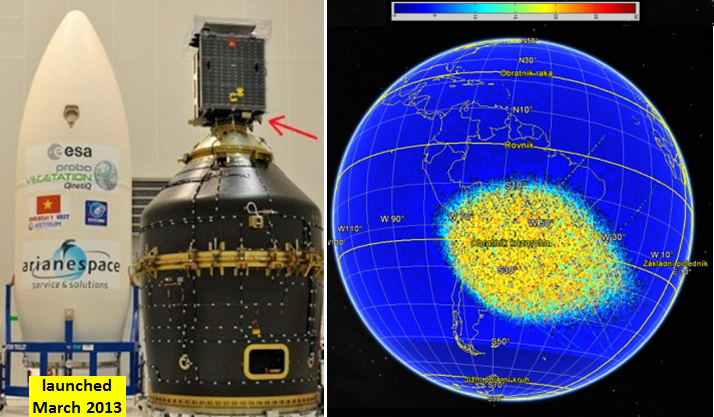
| Typ: | bakalářská práce, diplomová práce |
| Vedoucí: | Carlos Granja |
| www | http://www.utef.cvut.cz/en/index.php?Ns=103&id=1000034 |
| Obsah: | Cílem práce je mapovaní a vizualizace kosmického záření v prostředí ISS pomocí pokročilé a vysoce miniaturizované kamery radiace typu Timepix Lite, vyvinuté na ÚTEF ČVUT v Praze. Přístroje jsou od podzimu r. 2012 umístěny na palubě ISS provozované NASA. Předmět studentské práce je zpracování dat z celkem pětice přístrojů na ISS, vizualizace směrů drah energetických částic a tvorba prostorových a časových map toků částic v okolí Země. Stejnou úlohu lze řešit i pro přístroje ÚTEF na družici Proba-V ESA, která byla vypuštěna letošního roku (březen 2013). Projekty jsou realizovány ve spolupráci s University of Houston, NASA, ESA a Czech Space Research Center. |
Online zobrazování drah relativistických částic a charakterizace směsného radiačního pole v hadronové terapii a experimentech na urychlovačích pomocí pixelových teleskopů částic Timepix

| Typ: | bakalářská práce, diplomová práce |
| Vedoucí: | Carlos Granja |
| www | http://www.utef.cvut.cz/en/index.php?Ns=103&id=1000034 |
| Obsah: | Projekt je věnován využití pokročilých online pixelových teleskopů částic pro účely charakterizace radiačních polí a zobrazování trajektorie energetických částic v hadronové terapii pomocí lehkých iontů a na experimentech v jaderné fyzice pomocí relativistických iontů. Předmět studentské práce je zpracování dat z pixelových detektorů Timepix v různých geometrických uspořádáních. Detektorová instrumentace je sestavena na ÚTEF ČVUT v Praze, experimenty jsou realizovány ve spolupráci se zahraničními institucemi na unikátních pracovištích HIT v Heidelbergu a v JINR Dubna. |
Adatptivní počítačová tomografie
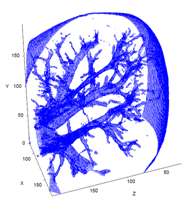
| Type: | Master, PhD |
| Supervisor: | Jan Jakůbek |
| Abstract: | Standard methods of computed tomography for X-ray or neutron radiography are based on measurement of number of 2D radiographic images (projections) of studied object under different angles. These data are used for off-line analysis resulting in 3D reconstruction of the object structure. During reconstruction it is seen that importance of projections can differ. Certain projections are more important than others. By implementation of feedback between reconstruction algorithm and radiographic system it is possible to reduce number of projections reaching the same reconstruction quality. The topic of the project is to develop such a system for adaptive computed tomography using existing equipment for X-ray microradiography and tomography with single particle counting pixel detector Medipix2 or Timepix. The work will be performed in frame of international collaboration Medipix2 a Medipix3 (CERN). |
Detekce kosmického záření a experiment CZELTA
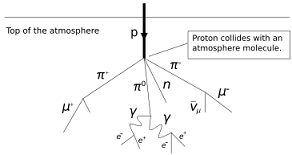
| Typ: | výzkumný úkol, diplomová práce |
| Vedoucí: | Karel Smolek |
| www | http://www.utef.cvut.cz/index.php?Ns=103&id=1000006 |
| Obsah: | Práce je zaměřena na studium vysokoenergetického kosmického záření za použití sítě detekčních stanic
CZELTA. Projekt je rozvíjen ve spolupráci s Univerzitou Alberta |
Diagnostika, optimalizace a automatická konfigurace parametrů pixelových detektorů Medipix

| Typ | Výzkumný úkol, Diplomová práce |
| Supervisor | Jan Jakůbek |
| Obsah | Polovodičové pixelové detektory ionizujícího záření vyvíjené a testované na našem pracovišti v rámci mezinárodní kolaborace Medipix řízené z CERN představují současný vrchol zobrazovací techniky. Správná funkce těchto systémů vyžaduje precizní nastavení mnoha parametrů. Toto nastavení se může pro jednotlivé detektory i jejich jednotlivé aplikace významně lišit. Ukazuje se, že manuálně nelze optimální nastavení najít a detektory jsou tak provozovány v nevýhodném režimu. Cílem práce bude nalezení kalibračních a optimalizačních postupů pro několik typických aplikací detektorů. Softwarové řešení tohoto problému se stane součástí systému Pixelman, který je celosvětově používán pro sběr dat z detektorů Medipix. |
Dvojitý elektronový záchyt 106Cd v experimentu TGV II

| Typ: | Diplomová práce, Doktorská disertační práce |
| Vedoucí: | Ivan Štekl, Pavel Čermák |
| Obsah: | Tématem práce (diplomové i doktorské) je měření dvojitého elektronového záchytu (EC/EC)izotopu 106Cd v experimentu TGV II, což souvisí s fyzikou neutrin. Spektrometr TGV II je umístěn v podzemní laboratoři Modane (Francie). Detektorová část spektrometru se skládá z 32 HPGe detektorů v jednom kryostatu, které pracují v koincidenci. Jedná se o dlohodobě běžící experiment. Úkolem studenta bude především se seznámit s principem činnosti spektrometru a s programovým vybavením pro zpracování naměřených dat (na bázi systému ROOT). Hlavním úkolem bude zpracování experimentálních dat pro různé módy 2νEC/EC (např. ze základní hladiny na základní hladinu a na vzbuzené hladiny 106Pd). |
Dvojitý rozpad beta v experimentu NEMO-3
| Typ: | Diplomová práce, Doktorská disertační práce |
| Vedoucí: | Ivan Štekl |
| Obsah: | Subject of thesis (diploma, Ph.D.) is connected with the measurement of double beta decay by the detector NEMO-3 which is installed in Modane underground laboratory (France). The NEMO-3 detector contains almost 10 kg of decay isotopes such as 100Mo, 82Se, 116Cd, 130Te, 150Nd, 96Zr and 48Ca. Detector is devoted to the search of neutrinoless and two-neutrino double beta decay. The responsibility of student is to become familiar with the NEMO-3 detector and mainly experimental data procesing of different modes (neutrinoless, two-neutrino, excited levels) for 1-2 isotopes. |
Koincidenční zobrazování s pixelovými detektory

| Typ: | Diplomová práce, Doktorská disertační práce |
| Vedoucí: | Jan Jakůbek |
| Obsah: | Technika instrumentální aktivační analýzy (IAA) pracuje s aktivovanými vzorky. Příslušný vzorek je zkoumán vzhledem |
Microradiographic monitoring of the behaviour of modern composite materials during failure
%20small.jpg)
| Type | Výzkumný úkol, Diplomová práce |
| Supervisor | Daniel Vavřík |
| Abstract | Nowadays composite materials (and nanocmposites) used for advanced structures in aerospace and automotive industry brings number of new tasks concerning on failure resistance. Standard toughness tests give lack informations due to highly nonlinear physical behaviour of these materials. The micro‑radiographic observation of the composite materials during loading can bring large benefit for basic research as well as for engineering practise when mechanical behaviour and damage mechanims will be identified. Nanofocus X-ray tube and pixelated X-ray detector Medipix will be used for experimental setup. Advanced image processing methods are required for succesfull fullfiling of the project goals defined below. - Developing of the experimental methodology for obsrvation of physical behaviour of the several types of the composite materials during loading. - Experimental data procesing resulting in description of the mechanical and damage behaviour of the inspected materials. |
Radiografie a tomografie pomocí sekundární radiace s polovodičovými pixelovými detektory

| Type | Master & Ph.D. |
| Supervisor | Jan Jakůbek |
| Abstract | Standard radiographic setups are mostly in transmission arrangement. A beam of radiation is attenuated by penetration through an investigated sample making projection of its internal structure onto detector surface. In many applications it is advantageous to combine this classical approach with imaging using secondary radiation emitted by the sample (X-ray fluorescence, prompt gamma emittion, scattering ...). The image recorded this way carries information about material composition of the sample. The aim of the student project is to build a system with pixel detector and suitable aperture for imaging with secondary radiation stimulated by beam of slow neutrons and/or X-ray photons and to develop methods for visualization of the sample structure. The work will be performed in frame of international collaborations Medipix2 and Medipix3(CERN). For experiments beam lines in laboratories of our partners in PSI (Switzerland), ILL/ESRF (France) and NPI (Czech Rep.) can be used. |
Spektroskopie štěpných fragmentů pomocí pixelových detektorů
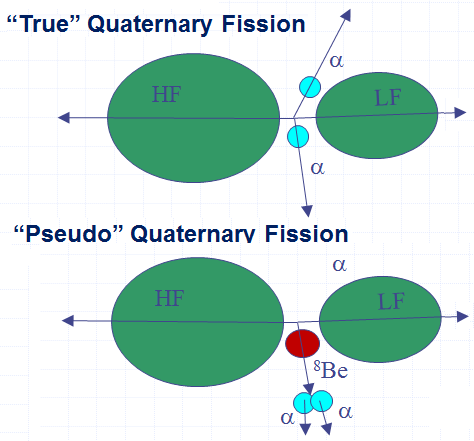
| Typ | Výzkumný úkol, Diplomová práce |
| Školitel | Carlos Granja |
| Abstrakt (anglicky) | This project aims at the experimental study of fission and rare decay processes such as ternary and quaternary fission. The position- and energy-sensitive pixel detector TimePix with per-pixel energy capability enables to measure precisely the energy of fragments and other particles. The figure shows a fission fragment (large cluster) and an alpha particle (small cluster) from 252Cf as seen in a portion of the 256x256 pixel array matrix of TimePix. 2D Gaussian fits are included. Experiments are carried out at the Neutron Physics Laboratory, JINR Dubna and at the ILL Grenoble. |
R&D of novel detecting structures in semiconductor sensors for position–sensitive detection and spectrometry of iozning radiation

| Type | Master & Ph.D. |
| Supervisor | Jan Jakůbek |
| Abstract | Curent semiconductor position sensitive detectors with segmented sensor utilize mostly pixilated or strip layout of collecting electrodes on the sensor surface. A new alternative arrangement is known as so called “3D detectors” where electrodes are created inside of the sensitive detector volume. The main aim of the student project is to design the sensor chip using new 3D technology and optimize it for several particular imaging applications. The design should reflect higher performance of current electronics which is able to process fast signals and larger data volume. The work will be performed in frame of international collaborations Medipix2 and Medipix3(CERN). Test devices will be fabricated in collaboration with partners of IEAP (i.e. Mid Sweden University Sundsval, Univ. of Glasgow and others). |
Zobrazování s pixelovými detektory v trasovacím režimu
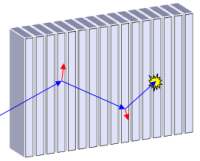
| Type | Ph.D. |
| Supervisor | Jan Jakůbek |
| Abstract | The system of pixel detectors arranged in layers can effectively record tracks of energetic particles. By proper analysis of these tracks it is possible to determine the direction and energy of the primary particle. This method can be used also for imaging and it is applicable in many fields where image integrating devices are currently used. The method improves qualitative properties of current methods such as: spatial resolution, efficiency, direction sensitivity (no need of collimator), energy sensitivity. The work will be performed in close collaboration with team of designers of current pixel devices in frame of international collaborations Medipix2 and Medipix3 (CERN). |
Study of radiation damage of crystals using channeling/blocking technique
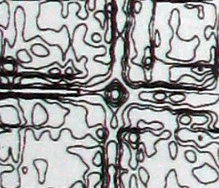
| Type: | Master, PhD |
| Supervisor: | Jan Jakůbek |
| Abstract: | The radiation damage causes serious problem for most of detection systems. For semiconductor detectors the damage of the crystalline lattice degrades charge collection efficiency. Quality of crystalline structure can be measured using effect of channeling/blocking of heavy charged particles (protons, alphas, ...). Main aim of this project is to determine whether channeling/blocking technique can be used for evaluation of radiation damages. Measurements will be performed with single particle counting pixel detector Timepix. The work will be performed in frame of international collaboration Medipix2 a Medipix3 (CERN). |
Neutralino detection (dark matter carrier) and experiment PICASSO
| Type | Master & Ph.D. |
| Supervisor | Ivan Štekl |
| www | http://picassoweb.lps.umontreal.ca |
| Abstract | Subatomic and astroparticle physics |
Pixel detectors in double beta decay
| Typ: | Diplomová práce, Doktorská disertační práce |
| Vedoucí: | Ivan Štekl, Pavel Čermák |
| Obsah: | The subject of thesis (Diploma, Ph.D.) is aimed to study the feasibility of using the pixel detectors in neutrino physics. Pixel detectors are state-of-art technique (more than 65 000 independent detectors in one chip, 55 x 55 micrometers2 each). The work will include the study of basic spectroscopic features of Si and CdTe pixel detectors (e.g. energy resolution, calibration), measurement of the background (in IEAP CTU and underground laboratory), distinguishing of different particles (electrons, mions, X-rays, photons) by pixel detector and coincidence measurement with pixel detectors. |
Zlepšení rozlišení polovodičového pixelového detektoru pro rentgenové záření metodou mikroposuvu
| Typ: | výzkumný úkol, diplomová práce |
| Vedoucí: | Daniel Vavřík |
| Obsah: | Pixelové detektory jsou úspěšně používány k mikroradiografickým pozorováním. Rozlišení takového detektoru je omezeno rozměry jeho pixelů. Pro zvýšení dosaženého rozlišení se standardně využívá efektu geometrického zvětšení za použití rozbíhavého svazku rentgenového záření. Když však roste geometrické zvětšení, zároveň se zmenší rozměry pozorované oblasti. Jinou možností upotřebitelnou ke zvýšení dosaženého rozlišení je subpixelový mikroposuv používaného rentgenového detektoru. Ačkoliv je tento přístup zcela běžný v oboru optického zobrazování, není dostatečně dobře prozkoumán pro zobrazování za pomoci rentgenových paprsků. Výsledný obraz je |
| Cíle zadávaného projektu jsou definovány následujícím způsobem: | |
| — Vyhodnocení podmínek, za nichž je mikroskanování přínosem. | |
| — Vyvíjení softwaru pro zpracování posloupností obdržených radiogramů. | |
| — Návrh, zkonstruování a realizace mikroskanovacího systému. |
Hledat
Události
21.-22. 11. 2014
Seattle, USA
8-15 Nov 2014
Surrey, Velká Británie
8. září 2014
9. září 2014
24. 4. 2014
3. 4. 2014
Seoul, Korea
27 Oct - 2 Nov 2013
Paris
23-27 June 2013
Anaheim, USA
29 Oct - 3 Nov 2012






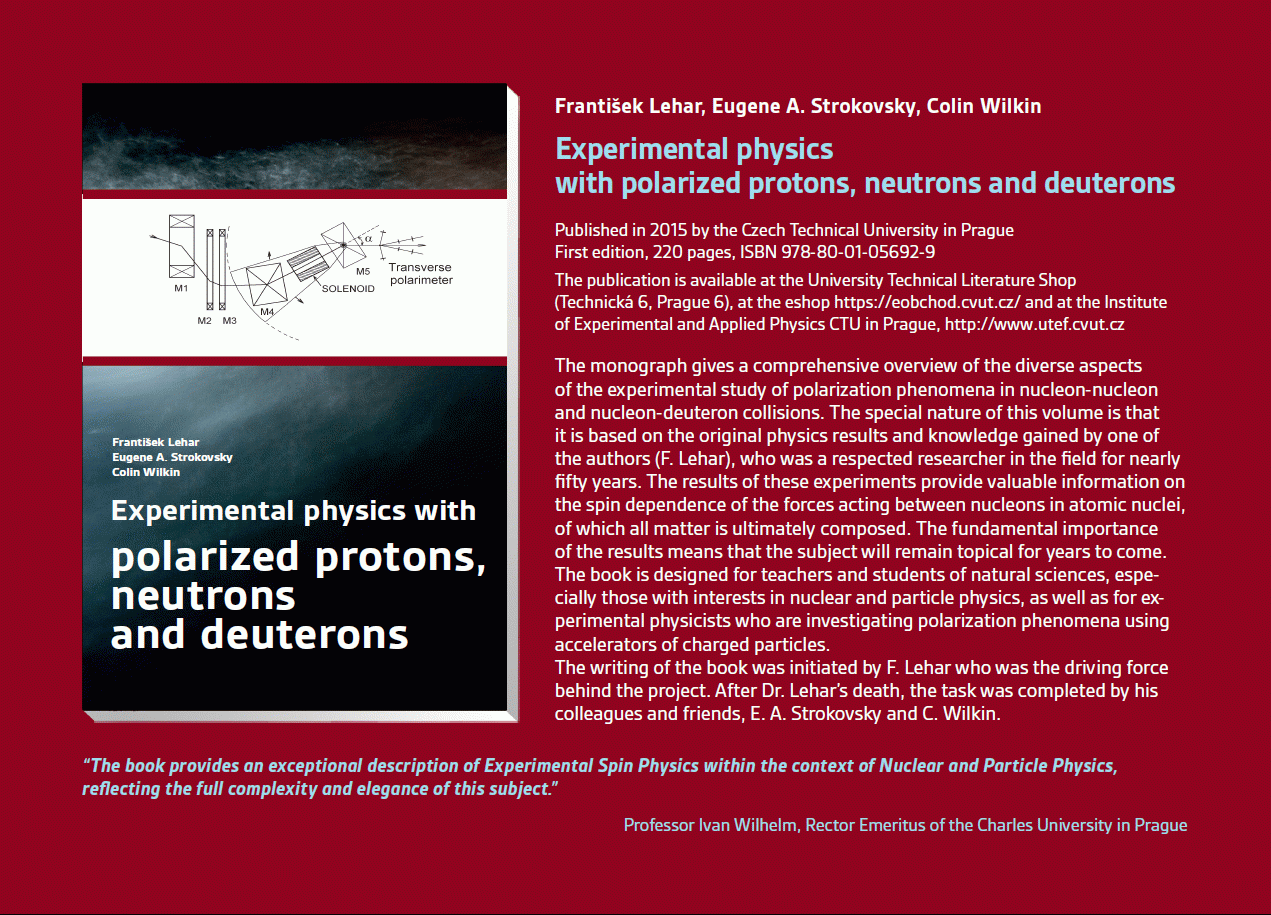 Experimental physics
with polarized protons, neutrons and deuterons
Experimental physics
with polarized protons, neutrons and deuterons Progresivní detekční metody ve výuce subatomové a částicové fyziky
na ZŠ a SŠ
Progresivní detekční metody ve výuce subatomové a částicové fyziky
na ZŠ a SŠ NSS MIC IEEE Conference
NSS MIC IEEE Conference Konference SEPnet, CERN@school
Konference SEPnet, CERN@school Lovci záhad - spolupráce ČT a ÚTEF
Lovci záhad - spolupráce ČT a ÚTEF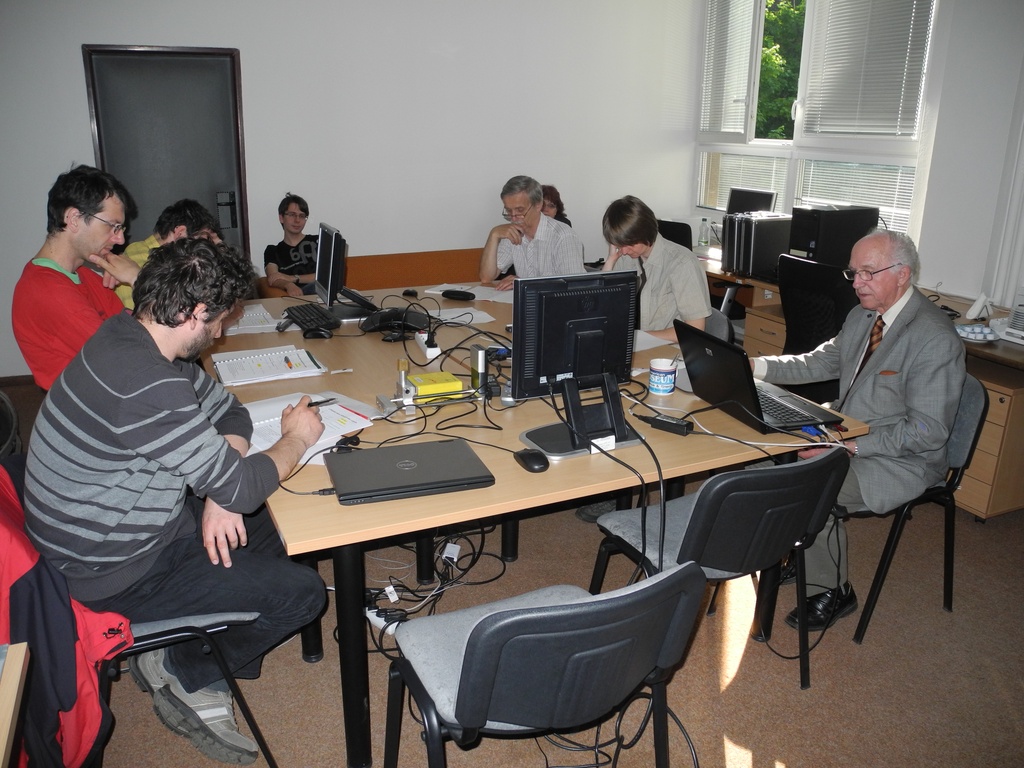 Progresivní detekční metody ve výuce subatomové a částicové fyziky na ZŠ a SŠ
Progresivní detekční metody ve výuce subatomové a částicové fyziky na ZŠ a SŠ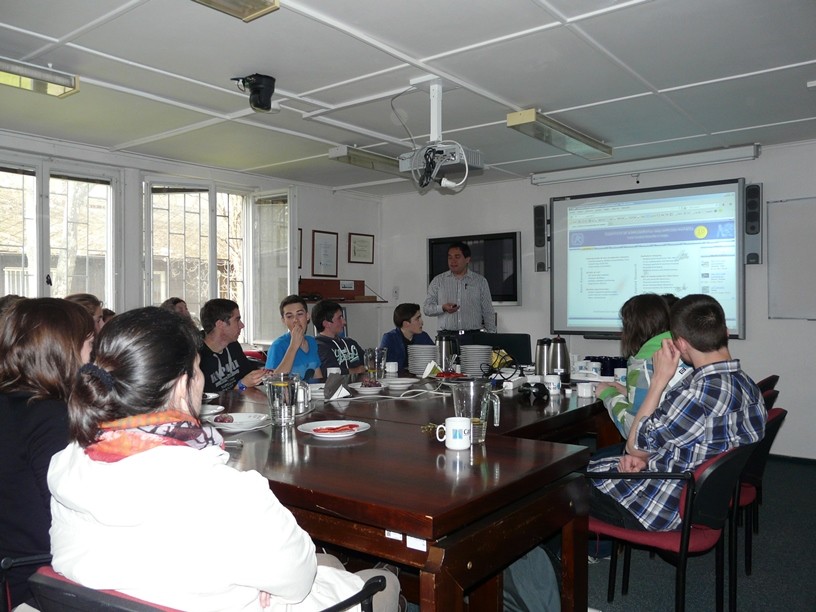 Návštěva v rámci projektu „Listening to the universe by detection cosmic rays“
Návštěva v rámci projektu „Listening to the universe by detection cosmic rays“ NSS MIC IEEE Conference
NSS MIC IEEE Conference 15thIWORID
15thIWORID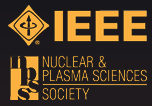 NSS MIC IEEE Conference
NSS MIC IEEE Conference